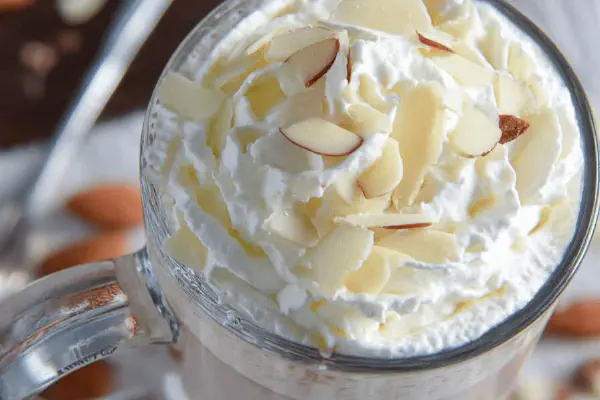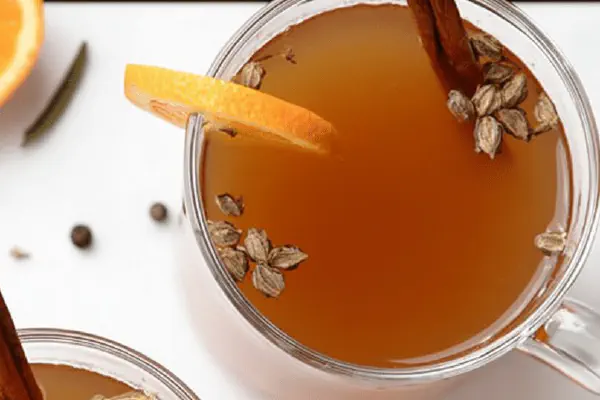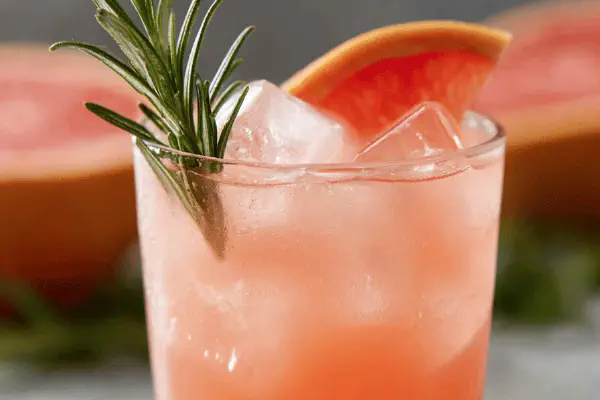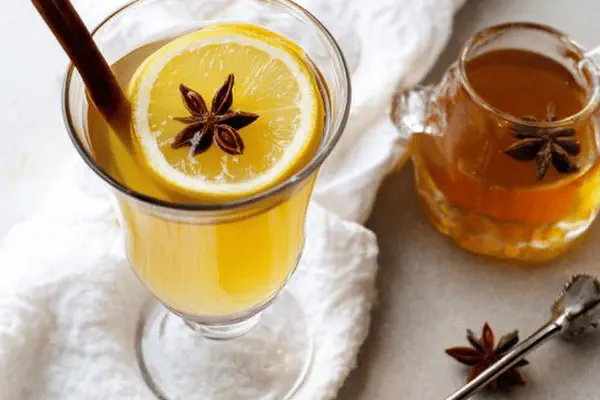Warm Apple Rosemary Butter Mocktail
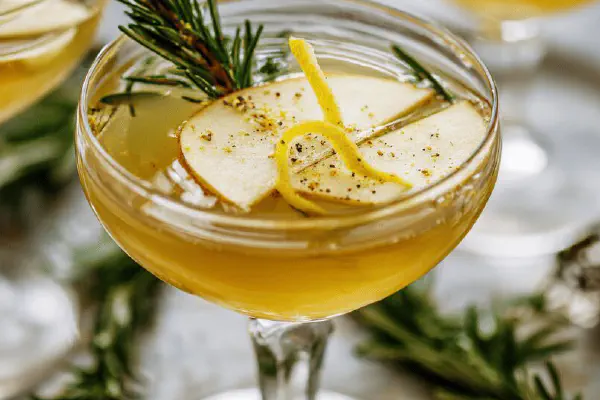
By Emma
Certified Culinary Professional
Ingredients
- 4 cups fresh apple cider or unsweetened apple juice
- 1 small fresh rosemary sprig, bruised slightly
- 1 tsp ground cinnamon (replace original cinnamon stick)
- 1 slice fresh ginger, thinly sliced (replace original clove)
- 1 lemon slice, plus zest for garnish
- 2 tsp unsalted butter (approx 10g)
- 1 tbsp honey or maple syrup (adjust to taste)
- Optional pinch of nutmeg for extra warmth
About the ingredients
Method
- Pour apple cider into small pot. Add bruised rosemary, sliced ginger, ground cinnamon, and lemon slice.
- Heat over medium heat. Listen for gentle bubbling — not a boil. Aromas will start to bloom around 5 minutes in. Stir once or twice.
- Add honey or maple syrup as liquid warms. Adjust sweetness slowly. Butter added last—watch for it to melt smoothly and coat the surface like a soft glaze.
- Simmer another 5-7 minutes. Watch rosemary color darken slightly, lemon peel edges curl gently.
- Remove pot from heat. Fish out rosemary sprig and lemon slice, unless you want rustic bits floating.
- Serve hot. Garnish with lemon zest and optional nutmeg pinch for layered fragrance.
- Drink while warm. Taste cold will mute spices — reheat gently if needed.
- Alternate: Use pear juice in place of apple for a mellower fruit note. Ginger optional if you prefer less bite.
- To fix bitter edge from overcooked lemon, add a slice of fresh apple or extra sweetener to rebalance.
- Use a fine mesh sieve if you want clear liquid. Otherwise, bits add rustic charm.
Cooking tips
Chef's notes
- 💡 Start cold apple cider or unsweetened juice. Heating slow releases flavors slower, stops bitter notes. Watch for tiny bubbles, not roaring boil, swelling scents hint. Rosemary bruised slightly, juicy oils come out fast. Cinnamon powder handy, avoids waiting for stick to infuse longer; quick but even extract. Ginger sliced thin replaces clove - bite sharp but less overpowering. Lemon slice added early, peel edges curl slowly, watch color change or sharp bitterness starts. Butter last, unsalted best, melts on top forming soft glaze. Stir gently avoid losing heat or frothing. Sweetness added while liquid warms, honey sinks in better. Timing varies, rely on smells and look of herbs not timer alone.
- 💡 Butter crucial step feels weird first. Add when syrup warm, not too hot or cold. Creates silky layer floating on surface, coating top with richness. Softens the sharp apple acidity, no sugar substitution. If butter melts haphazardly, heat not even, liquid too cool or too hot. Watch surface not frothing. Honey or maple syrup flexible, maple earthy note shifts profile more deep. Cinnamon powder better for uniform taste than stick for speed. Use freshly bruised rosemary sprigs, not dry leaves which turn dusty and muted. Lemon zest garnish freshens at serving, keep peel from cooking too long or bitterness worsens. Test taste warm and cold. Cold dulls spice intensity but still enjoyable. Adjust sweetness after initial simmer.
- 💡 Simmer 5-7 min after butter added for spice depth. Rosemary color subtly darkens, lemon peel curls and edges soften, confirmations to stop heating. Too dark or boiling kills aromas and bites turn sharp and bitter fast. Strain optional depends on rustic texture preference. If bits floating bother, fine mesh sieve clears drink but loses herbal weight. Use fresh apple slices or add extra sweetener for bitter edge from overcooked lemon peel. Note: lemon acidity cuts but prolonged heat kills balance. Reheat gently if cool, no long simmer again or flavor fades. Ginger optional removal if you prefer less bite, swap for clove if nostalgic. Pear juice substitution decreases acidity, mellows drink.
- 💡 Watch aroma closely as primary doneness guide. Five minutes in, scents bloom in kitchen air. No rushing, patience critical when dealing with herbs and sugars. Stir once or twice to distribute spices, avoid heavy froth or agitation which loses subtle heat needed for aromas. Butter melt signals close to ready, buttery layer sits soft atop liquid unlike greasy layer if overheated. Honey clumps if added to cold liquid so wait warming phase. Sweetness is personal, add incrementally. Nutmeg pinch optional, adds complexity but easy to overpower. Don’t overdo or nutmeg overtakes herbaceous notes. Visual cues like lemon edges curling and rosemary darkening show progression better than timer alone.
- 💡 Use leftovers wisely, store in sealed container. Reheat gently to preserve layered spices. Overheating kills aromas fast, flavors flatten. Avoid microwave if possible, gentle stovetop heat preferable. Butter soft layer may disappear if reheated aggressively but flavor remains. If lemon flavor too sharp, add mild sweetener or fresh apple slivers post heat. Freshness key for rosemary and citrus. Dry herbs lose brightness. For clear mocktail, strain after warming but understand loses rustic charm and texture. Ginger and cinnamon powder swap possible if preferred. Experiment with honey versus maple syrup to tweak earthiness or sharpness. Flavor evolves as it cools, better as sip slows down.
Common questions
Why use cinnamon powder instead of stick?
Powder gives faster flavor release. Less wait, more consistent heat distribution. Sticks take longer. Powder avoids chunks in sip. Easier to stir in too. Avoid extraction bitterness if timing off with sticks.
Can I substitute ginger with clove?
Yes, clove more intense and sharp, ginger warmer and snap like profile. Clove can overpower if careless. Ginger safer for milder taste. Depends on spice tolerance. Either way add thinly sliced for slow infuse. Adjust timing to prevent bitterness.
How do I fix a bitter taste from lemon?
Remove lemon immediately if bitterness noticed. Add fresh apple slice or extra sweetener - maple or honey. Balances acidity sharply cutting bitterness but don’t add too much or sweetness masks flavors. Slow simmer is key to avoid overcooked peel bitterness.
How to store leftovers?
Seal in airtight container, refrigerate for up to 2 days. Reheat gently over low heat, avoid microwave for best aroma retention. Butter layer may dissipate but flavor intact. Can strain before storage if prefer clearer drink. Stir well before serving, spice settles at bottom sometimes.
